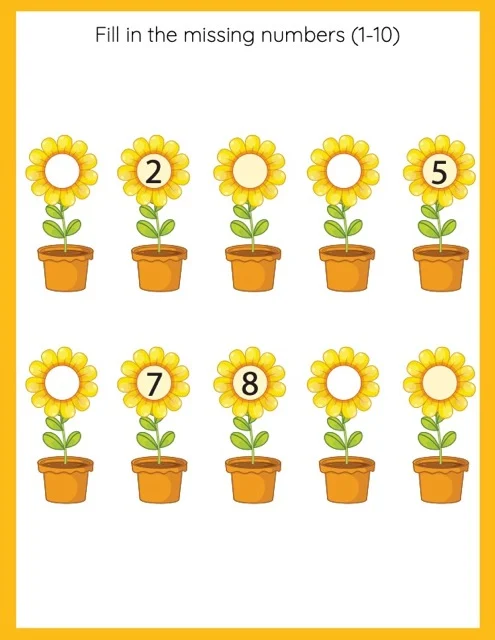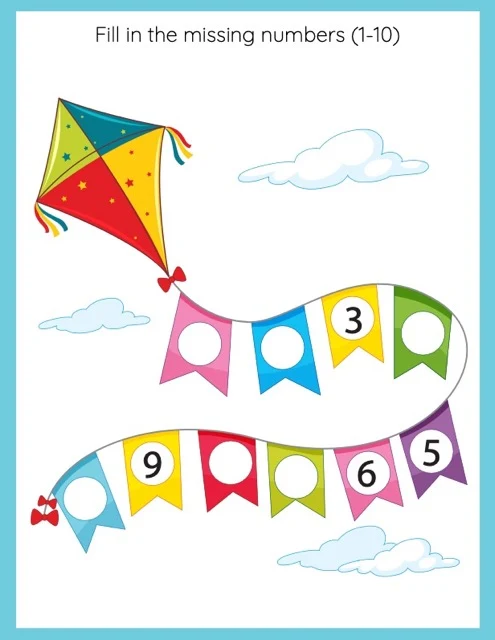Missing Number Worksheets: Building Math Skills
Missing number worksheets are educational tools designed to help young children (preschool and early elementary) develop essential math skills. These worksheets, which come in various formats (picture-based, number lines, grids), focus on number recognition, sequencing, pattern recognition, and problem-solving. The provided resources advocate for incorporating diverse teaching methods, including games and real-life applications, alongside worksheets to maximize learning effectiveness and to avoid over-reliance on screen-based activities. Ultimately, the goal is to build a strong foundation in math through engaging and varied learning experiences.
Missing Number Worksheets: A Comprehensive Guide
Missing Number Worksheets: A Comprehensive Review
This briefing document analyzes the provided sources to offer a comprehensive overview of missing number worksheets, their benefits, and their applications in early childhood math education.
What are Missing Number Worksheets?
Missing number worksheets are educational tools presenting a sequence of numbers with one or more missing values. Children identify and fill in the gaps, practicing key mathematical skills like:
●
Number recognition and sequencing: Identifying and ordering numbers ("Missing Number Worksheets: A Guide for Educators").
●
Pattern recognition: Recognizing and continuing numerical patterns, such as skip counting ("Missing Number Worksheets: A Guide for Educators").
●
Counting and cardinality: Understanding one-to-one correspondence and the total quantity represented by a number ("Missing Number Worksheets: A Comprehensive Guide").
●
Problem-solving: Utilizing logical thinking and deductive reasoning to determine missing values ("Missing Number Worksheets: A Comprehensive Guide").
Target Audience and Benefits:
These worksheets primarily target preschool and early elementary students learning foundational math concepts ("Missing Number Worksheets: A Guide for Educators"). They are particularly beneficial for visual learners ("Missing Number Worksheets: A Comprehensive Guide"). Benefits of using picture-based worksheets include:
●
Visual appeal: Engaging and enjoyable learning experience.
●
Number-quantity association: Connecting abstract numbers to concrete quantities.
●
Differentiation for learners: Providing support for students struggling with abstract number symbols ("Missing Number Worksheets: A Comprehensive Guide").
Types of Missing Number Worksheets:
●
Picture-based: Images corresponding to numbers enhance visual appeal and number-quantity association.
●
Number lines: Visualizing number order and intervals on a linear scale.
●
Grids and tables: Recognizing patterns in rows and columns.
●
Themed worksheets: Engaging themes like animals or holidays to make learning fun ("Missing Number Worksheets: A Guide for Educators").
Examples from "Testing Theme: Missing Numbers.pdf":
The provided document showcases various examples of missing number worksheets with themes like animals, toys, and holidays. They cater to different number ranges and patterns, offering a diverse learning experience.
Effective Use and Integration:
To maximize the effectiveness of these worksheets:
●
Start with appropriate difficulty and gradually increase the challenge.
●
Make learning fun with colorful worksheets, engaging themes, and positive reinforcement.
●
Encourage children to explain their reasoning, discuss patterns, and count aloud.
●
Integrate number sequencing skills into daily routines like counting stairs or objects ("Missing Number Worksheets: A Guide for Educators").
Beyond Worksheets:
To foster a robust understanding of number concepts, it's crucial to incorporate diverse learning activities beyond worksheets, including:
●
Number puzzles: Enhance logical thinking, problem-solving, number sequencing, and pattern recognition ("Missing Number Worksheets: A Comprehensive Guide").
●
Counting games: Hopscotch or board games promote number recognition and sequencing.
●
Songs and rhymes: Repetitive patterns and melodies help internalize number sequences.
●
Real-life counting: Counting everyday objects builds practical understanding ("Missing Number Worksheets: A Guide for Educators").
Technology Integration:
Interactive digital versions of worksheets offer features like animations, audio prompts, and progress tracking, making them highly engaging. However, it's important to consider potential drawbacks such as screen time management and the importance of hands-on learning ("Missing Number Worksheets: A Comprehensive Guide").
Conclusion:
Missing number worksheets are valuable tools for developing foundational math skills in young children. By incorporating diverse activities and thoughtful instructional strategies, educators can create engaging and effective learning experiences that foster a strong understanding of number concepts.
Missing Number Worksheets: A Guide for Educators
Missing Number Worksheets: An FAQ
1. What are missing number worksheets?
Missing number worksheets are educational tools that present a sequence of numbers with one or more numbers missing. The learner's task is to identify and fill in the missing numbers, thereby practicing number sequencing, pattern recognition, and counting skills.
2. Who are these worksheets designed for?
Primarily, these worksheets are designed for young children in preschool and early elementary grades who are learning foundational math concepts. They cater to visual learners and can be particularly helpful for those who benefit from interactive activities.
3. What skills do missing number worksheets help to develop?
Completing these worksheets enhances several key skills:
●
Number recognition and sequencing: Children learn to identify and order numbers within a given range.
●
Pattern recognition: Worksheets often present numbers in patterns (e.g., skip counting by 2s or 5s), encouraging children to decipher and continue the pattern.
●
Counting and cardinality: Filling in missing numbers reinforces the concept of one-to-one correspondence and understanding the value each number represents.
●
Problem-solving: Children engage in basic problem-solving as they figure out the logical progression of numbers.
4. What are the different types of missing number worksheets?
The worksheets come in various formats to keep learning engaging and cater to different learning styles:
●
Picture-based: Images corresponding to each number make the activity visually appealing and help with number-quantity association.
●
Number lines: Missing numbers within a linear number line help visualize number order and intervals.
●
Grids and tables: Numbers arranged in grids or tables encourage pattern recognition in both rows and columns.
●
Themed worksheets: Using themes like animals, toys, or holidays adds an element of fun and relates numbers to familiar contexts.
5. What number ranges are typically included in these worksheets?
Worksheets are adaptable to different skill levels. They often start with numbers 1-10 for beginners and gradually progress to larger ranges like 1-20, 1-50, and even 1-100 as the child's understanding grows.
6. How can I use these worksheets effectively?
Here are some tips for using missing number worksheets:
●
Start with appropriate difficulty: Begin with simpler worksheets and gradually increase the challenge.
●
Make it fun: Use colorful worksheets, incorporate themes the child enjoys, and provide positive encouragement.
●
Go beyond filling in: Encourage the child to explain their reasoning, discuss patterns, and count aloud.
●
Integrate into daily routines: Use opportunities like counting stairs or objects in the house to reinforce number sequencing skills.
7. Are there digital versions of missing number worksheets available?
Yes, many websites and apps offer interactive versions of these worksheets. These can be particularly engaging for children who enjoy screen-based learning. Digital versions often include features like audio prompts, animations, and progress tracking.
8. What are some other activities to support number sequencing skills?
●
Number puzzles: Puzzles with numerical sequences help develop logical thinking and problem-solving skills.
●
Counting games: Games like hopscotch or board games that involve counting moves enhance number recognition and sequencing.
●
Songs and rhymes: Many children's songs and rhymes incorporate counting, making learning enjoyable and memorable.
●
Real-life counting: Encourage counting everyday objects like toys, books, or snacks to build a practical understanding of numbers.
Missing Number Worksheets: A Comprehensive Guide
Missing Number Worksheets: Study Guide
Key Terms Glossary
Short Answer Questions
1.
What are two primary audiences for missing number worksheets?
2.
List three benefits of using picture-based missing number worksheets.
3.
Explain the concept of cardinality and how missing number worksheets can help develop it.
4.
Differentiate between number recognition and number sequencing.
5.
Describe how missing number worksheets can facilitate problem-solving skills in young learners.
6.
Provide two examples of themes that can be incorporated into missing number worksheets to enhance engagement.
7.
What are two advantages of using digital versions of missing number worksheets?
8.
Suggest three real-life activities that can reinforce number sequencing skills.
9.
How can number puzzles contribute to a child's mathematical development?
10.
Briefly explain how incorporating songs and rhymes can make learning numbers more enjoyable for children.
Short Answer Key
1.
Preschool and early elementary students learning foundational math concepts, especially visual learners.
2.
Visual appeal: Pictures make the activity more engaging and enjoyable. Number-quantity association: They help connect the abstract concept of numbers to concrete quantities. Differentiation for learners: They provide support for those who may struggle with abstract number symbols.
3.
Cardinality means understanding that the last number counted represents the total quantity. Missing number worksheets reinforce this by requiring children to fill in the missing numbers to complete a sequence, which helps them understand the relationship between counting and the total number of objects.
4.
Number recognition is simply identifying and naming individual numbers. Number sequencing involves placing numbers in a specific order, such as from smallest to largest or following a pattern.
5.
Missing number worksheets require children to analyze number sequences and determine the missing values. This process involves logical thinking and deductive reasoning, encouraging problem-solving skills.
6.
Examples of engaging themes: animals, toys, holidays, seasons, sports.
7.
Interactive elements: Digital worksheets can include features like animations and audio prompts, making them more engaging. Progress tracking: Many digital platforms offer tools to track student progress and identify areas for improvement.
8.
Counting stairs, counting objects during cleanup time, counting ingredients while cooking.
9.
Number puzzles require children to apply logic and reasoning to determine the correct placement of numbers. This can enhance their number sequencing skills, pattern recognition, and problem-solving abilities.
10.
Songs and rhymes often use repetitive patterns and melodies that make learning numbers more enjoyable and memorable. The rhythm and rhyme help children internalize number sequences and associations.
Essay Questions
1.
Discuss the various types of missing number worksheets and their specific benefits in developing different mathematical skills.
2.
Analyze the importance of incorporating diverse and engaging learning activities, beyond worksheets, to foster a strong understanding of number sequencing and cardinality in young children.
3.
Explain how missing number worksheets can be used as a diagnostic tool to assess a child's understanding of number concepts and identify areas where they might need additional support.
4.
Evaluate the role of technology in enhancing the effectiveness of missing number worksheets and other math learning activities for young children. Consider both the advantages and potential drawbacks.
5.
Design a comprehensive lesson plan for a preschool or early elementary class that focuses on teaching number sequencing using a variety of activities, including missing number worksheets, games, songs, and real-life examples.





























